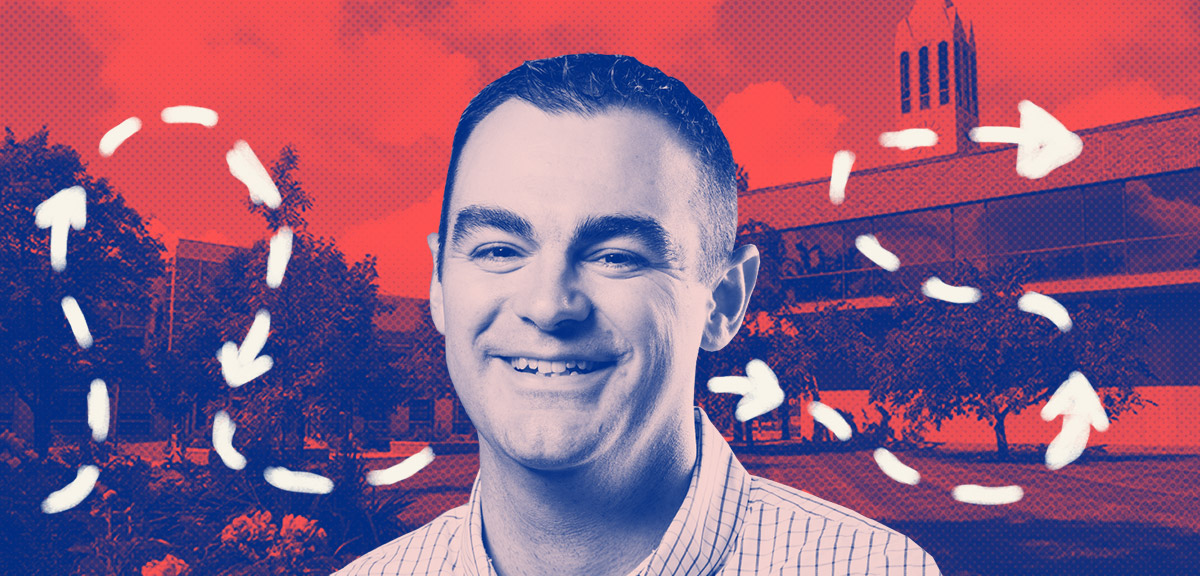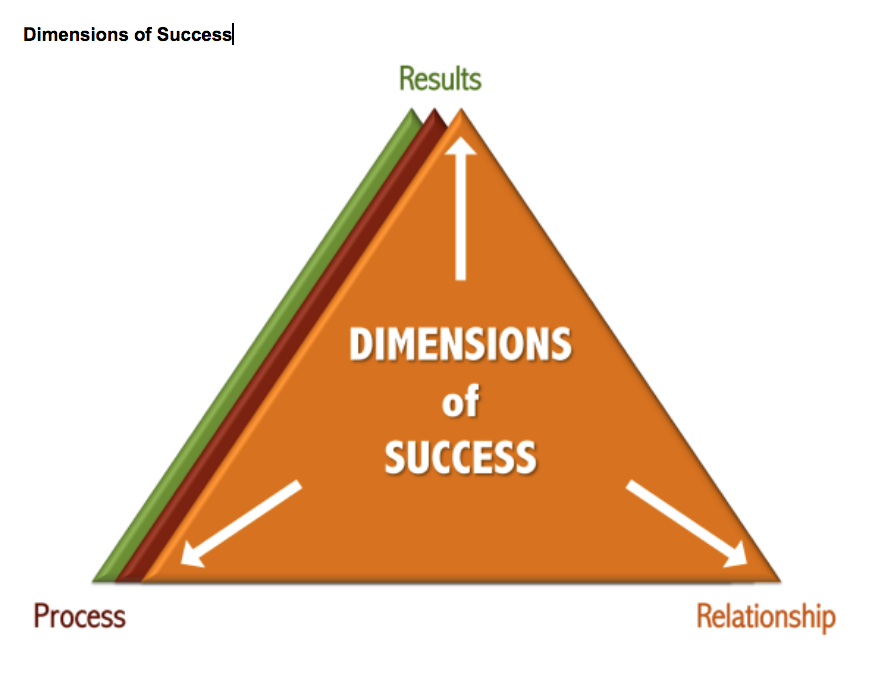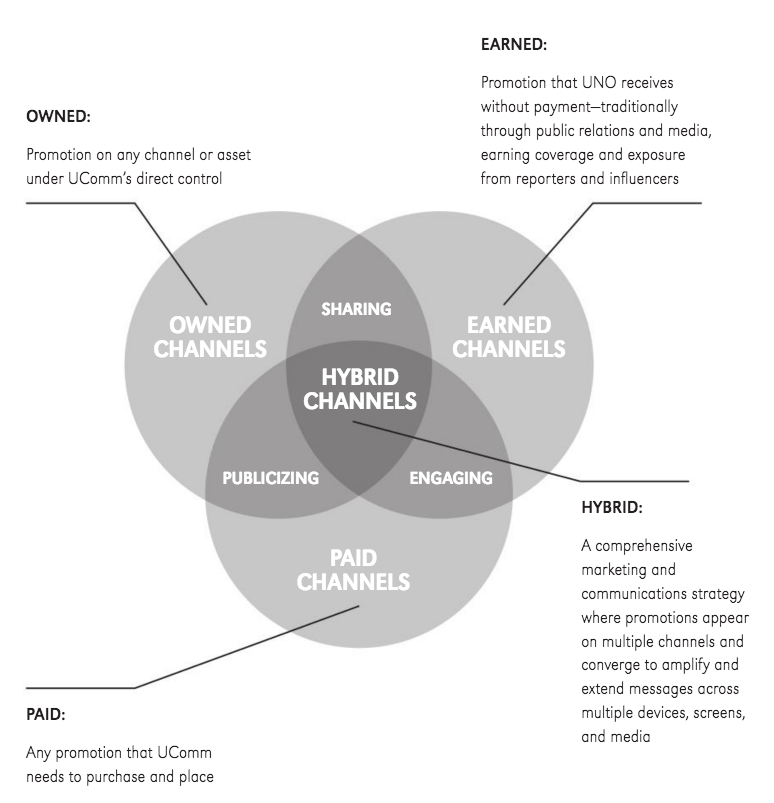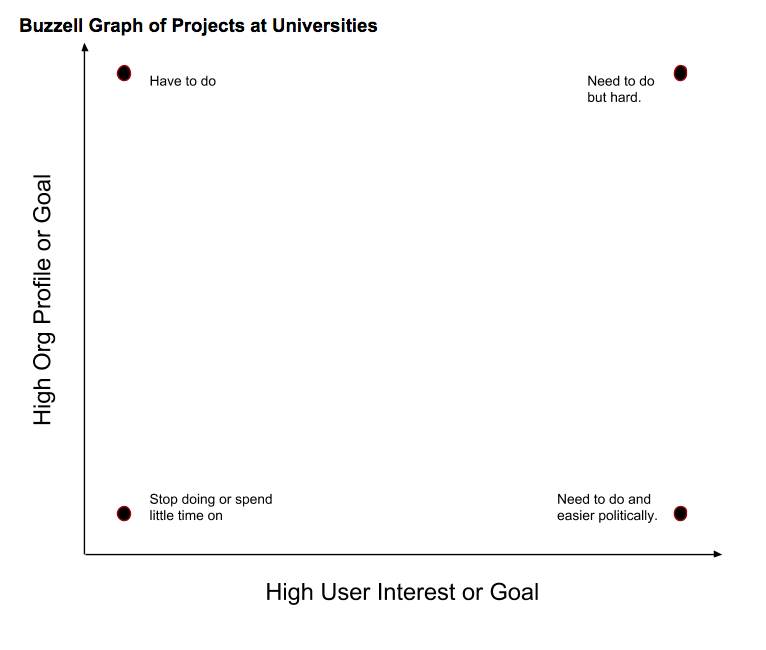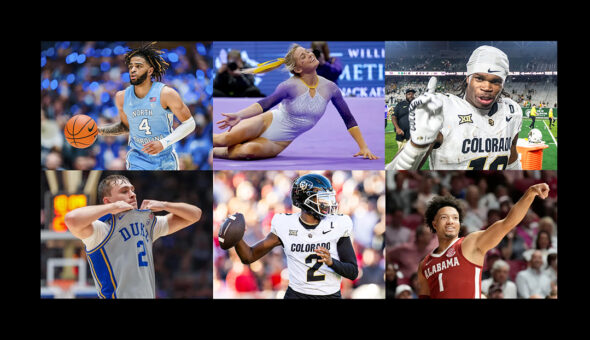Speaking of Deans and big bosses, give them a bone every now and then. If your boss wants eight carousel images, give them five and balance that need with working on something else where you have time to help users. Now – if you have great bosses like myself right now – obviously enjoy a homepage tailored toward top tasks. But don’t fight them tooth and nail if they can’t buy-in. There are other ways to spend your time fighting that still help users in the end.
Filling a carousel with a few images and texts isn’t high on the user goal, but it’s also pretty high up on some boss’ lists. So do it – manage time well as best you can – and then dive in on those high user interest, low org profile projects. We’ve made great hay in the past on a few examples like summer camps, campus policies, employee directory enhancements as well as buildings. In my first institution, we strategically had “make a donation” while registering for an event that led to $1,000s of extra dollar. At another, we wove in content from another college to promote programs between two innovative departments. Bless them! The key is to get your team(s) out of the low org profile and low user interest. See shiny bobbles below!
Happy Deans (Bosses) Stir the Drinks
We keep the Dean train going. A happy Dean can pay dividends down the line. Pitch in at events or be present for non-digital things where you can help them. This will help make it less transactional or confrontational down the road. So often, digital gets lumped in like a technical solution or IT. Phrases like, “Just do it” or “Just give access” or “Who can I talked to up the food chain to make this happen.” At that point, it may be too late. At the same time, give where you can, and care where you must.
Little Things = Big Strategy (vision)
The war might never be won at every institution. Sprawl of solutions and applications will happen as budgets are aligned to audiences or services. Win the battles and celebrate them together with your partners who want to work with you. Nominate your coalition of the willing for awards. Engage with faculty where you can. If you can get the right content aligned with the right channel, that’s a win.
As an example, I’ve had HR professionals request a new separate website. In meeting with them, what they really needed was a communication plan and content adjustment to their existing posts. Another example was many homepage requests that were really college communicators begging for promotion of events, musicals or other events or happenings in other channels besides the homepage. Your job can be a connector on campus as much as a doer of web content, social media or emails. Consolidation of email tools or social media accounts – even just one. Buy-in for 90% on a common CMS or LMS. Content alignment offline. Brand consistency. The list goes on and on. These are little things that are BIG at some institutions. You as a digital pro can lament at what’s not going right, or take pride and own the ones that are.
Tracking Can be Triumphant but Also Trivial
As a person who has worked with many teams who analyze and own the web analytics implementation, data can be gold. It can also be confusing for many and can put you in a corner on others. I once sat in a meeting presenting on many fine data points only to have the leader say, “That’s all good and well, but none of that matters to us.” That’s one way to win a meeting! I remind people day-in and day-out data is one part of the story. It should help shape and inform but it doesn’t begin and end with it. Especially in Higher Ed with 300 small businesses so to speak! Couple the qualitative with quantitative and build teams that can shape things for the user first – both internally and externally – across multiple channels.
Visuals are Victorious
Graphs, graphics, imagery and video can not only win for users, but obviously for internal advocates. BUT – you must have a strategy and purpose. The simple things are the biggest, foundational pieces from doing great visuals and content to avoiding the shiny bobble.
One of my favourite posts for Higher Ed digital pros to help them focus on projects and priorities was this one from NN Group. It outlines the keys to foundational things such as have your logo consistently on every page, about and majors and programs pages that count. A big one that gets lost sometimes is: Use images that reflect your university’s values and priorities. Never underestimate the power of an image to win over your audience. High-quality ones or user submitted ones.
Shiny Bobbles Will Bobble
